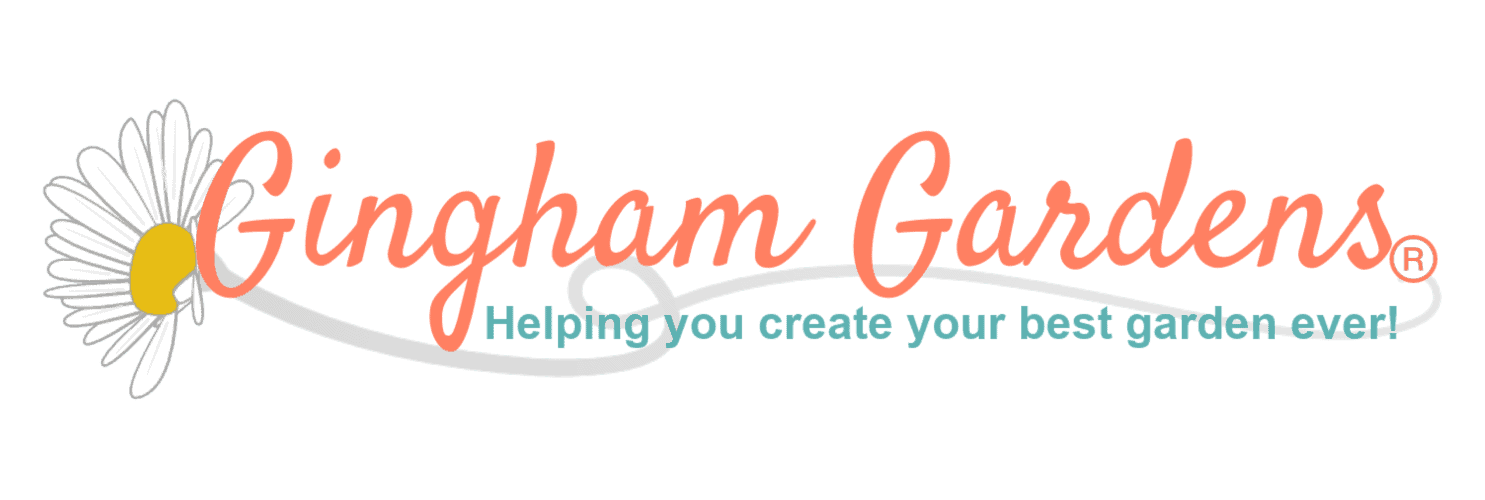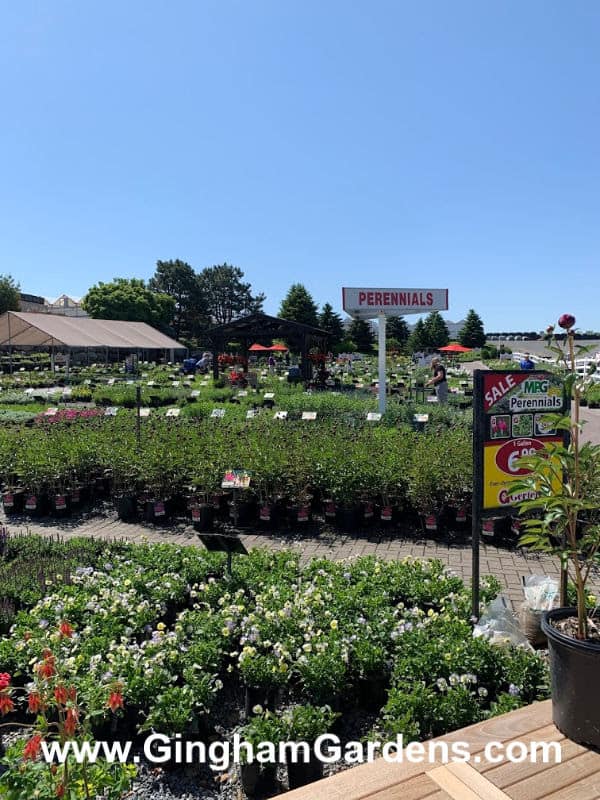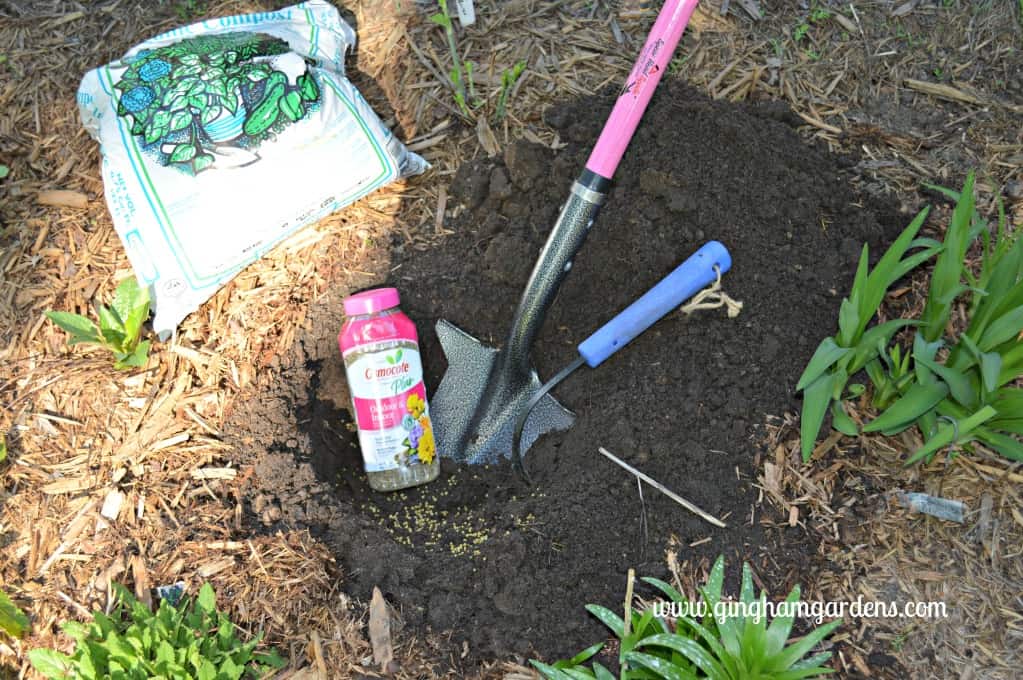13 Flower Gardening Mistakes (And How to Fix Them)
One of my goals here at Gingham Gardens to create a site where there’s something for everyone. Whether you’re a new gardener, or a seasoned gardener like me, we all make mistakes in our gardens. After all, messing up or making mistakes is how we learn – right? Even after all these years, I still find myself making some of these mistakes over and over again (especially #4), and every year I’m determined that I won’t make the same mistake next year. Does this sound familiar? Follow along and see if you are making one (or more) of the most common Flower Gardening Mistakes.
Do you have a garden that just isn’t flourishing? It can be discouraging when your hard work doesn’t pay off. But, the good news is the problem and solution are likely here in this list of the most common gardening mistakes. Even though, this article is called 13 Flower Gardening Mistakes, you will find that most of these apply to vegetable gardens too.
Even though, this article is called 13 Flower Gardening Mistakes, you will find that most of these problems apply to vegetable gardens too.
This post contains affiliate links. If you click on
one of the links and make a purchase,
I may receive a small commission at no additional cost to you.
Read the full disclosure.
Gardening Mistake #1 – Failing to Plan
Are you a fly-by-the-seat-of-your-pants kind of gardener? Well yes, yes that was me! I’ve learned over the years that planning is the number one key to success in gardening. Just taking time to plan out what you’d like to accomplish in your gardens this season goes a long way.
Do you have a particular garden bed that needs a makeover? Do you want to start a new garden? Has a once sunny garden become shady because of growing trees? What plants need to be divided? What new plants do you want to try? Did your Shasta Daisy grow taller than the daylily that’s behind it and they need to be swapped?
Do this instead! – Make lists, write your thoughts down, make sketches and plan out what you want to accomplish. Seriously consider starting a garden journal and planner. It doesn’t have to be anything fancy, but a Garden Journal and Planner is one of the best ways to help you get organized and help you plan a well-thought-out garden. Plus, it will keep you on track to accomplish your gardening goals. Gingham Gardens has a very cool, free gardening resources library that makes it very easy to put together your own garden planner. You’ll be well on your way to your best growing season ever!
Gardening Mistake #2 – Ignoring Sun Requirements
One of my pet peeves is seeing hosta plants in full afternoon sun. Yes, they are fine in the spring, but when summer heats up, those poor hosta are going to fry. It’s true, that some hosta do fine in sun, but for the most part, they are shade plants. I don’t want to offend you, but if you have hosta plants in full sun… just move them.
Do you have flowers in your garden that just aren’t flourishing, or the amount of blooms are just meh? This can be applied to vegetable gardens too. Don’t overlook this common gardening mistake.
How to fix it! – It’s always a good idea to read those plant tags and seed packets to check the plant’s sun requirements. Are they getting enough sun, or too much sun? Move them to a spot that will fulfill their sun requirements and I’ll bet you’ll see a drastic difference.
To remind you of this post later, save this pin to one of your favorite flower gardening boards on Pinterest.
Gardening Mistake #3 – Planting Annuals Too Early
This is a tough one for those of us that live in colder gardening zones. After a long winter, I get so excited to see pop-up greenhouses going up in parking lots and big box stores full of blooming plants. They just scream my name!
How to Know When to Purchase & Plant Annual Flowers and Vegetables in the Spring
First of all you need to know your gardening hardiness zone. Go here https://planthardiness.ars.usda.gov/PHZMWeb/ and enter your zip code in the upper left-hand corner and click find. Second, you need to know the last expected frost for your area. To find this information out, go to https://www.almanac.com/gardening/frostdates.
In addition to knowing the last frost date for my area, I watch the extended forecast. I typically wait to plant until nighttime temperatures are closer to 50 degrees and the soil temperature has warmed too. I’ve only had to cover plants twice in the last 30+ years.
Once you make the mistake of planting too early and you lose plants to frost or you have to run out and freeze your butt off to cover a bunch of plants, you will learn your lesson and remember it. If you feel the need to plant flowers in early spring, go with plants that can withstand some light freezes like pansies, violas or snapdragons.
Flower Gardening Mistake #4 – Plant Shopping
This is probably my biggest gardening failure. I simply go gaga when I head to my favorite nursery in the spring. Holy cow, so many beautiful flowers. I need one of everything and into my cart they go. Lots of flower gardening mistakes can be avoided with well-planned plant shopping.
Here’s how I work to control my addiction – First go back to #1 – plan, plan, plan… And, make a list! Now to stick to my list, I do not carry my wallet into the nursery with me. I use cash. I’m serious, I really do. I stick the allotted amount of cash I’ve set aside in my pocket and leave my wallet in the car. Just doing this one small thing, makes me think about what I’m purchasing and helps me stick to my list and stick to my budget. I keep a running tally on my cellphone calculator, so I don’t overspend.
Also when plant shopping, whether it’s at your local nursery or another gardener’s plant sale, know what you are purchasing! You do not want to end up with the wrong plants for your situation or aggressive or invasive plants that are going to cause you more grief in the long run than they are worth. If you don’t know the characteristics of a plant and there’s no one available to ask, simply pull out your phone and google the plant name and do a quick read up on its characteristics.
Don’t buy plants that are in full bloom. By the time you get the plant home and planted it’s bloom cycle will be finished. This is the case for both annual and perennial flowers. Look for plants with small tight buds and maybe just a few blooms. This is often a flower gardening mistake of beginner gardeners and seasoned gardeners alike. It’s hard to resist a plant in full bloom.
For more tips on Plant Shopping and how to get the biggest bang for your buck, stop by and check out Plant Shopping 101.
Gardening Mistake #5 – Garden Design Mistakes
Do you buy so many plants that you end up just sticking them in anywhere with no thought of planning or a garden design? I’ve been guilty of that. Every spring I would have my big collection of various plants that I had purchased at the nursery sitting on my sidewalk and I would go through and find a place for each plant, sticking them in wherever there’s a hole with no thought of design whatsoever. Going back to #1, it’s always good to have a plan!
Along these same lines, when you purchase a new perennial, it is not fully grown. New perennials generally do not reach their full size until the second, or most likely third year. Be sure to leave proper spacing between your plants to allow for growth. I have read different schools of thought on this, some say to leave no room for weeds to grow between your plants, others say plants need room for air to circulate between them to avoid fungus and other diseases. This is one area where you must figure out your own style and go with it.
Not planting bulbs and perennials in groups or drifts. You don’t have to be a garden designer to have a beautiful flower garden. Just imagine a row of tulips or daffodils lined up 6 inches apart like little soldiers. Oops, maybe you had a dud bulb, or maybe some bunny ate a flower and now that little row of flowers doesn’t look so great. Now imagine a cluster of a dozen tulips or daffodils. If somebody eats one or one doesn’t bloom, it’s not going to matter. So, which one looks better? The cluster of flowers, of course! Similarly, a grouping of the same perennial plant goes a long way to make a flower garden look amazing.
Gardening Mistake #6 – Ignoring Bad Soil
There are exceptions, but most plants won’t thrive in crappy soil. Fertile soil is key to a garden’s success!
Amending soil can freak out the newest of gardeners, but it really doesn’t have to be complicated. I highly recommend getting a soil test done through your local extension service. Confession time… I’ve been gardening for over 30 years and I’ve never gotten a soil test done but it’s on my list for this year.
How to fix it! – Although you cannot change the makeup of your garden soil, you can improve it. Amending garden soil is something that you just keep working at year after year. Whether you have clay or sandy soil, just add a good organic matter every time you plant. If you don’t have a compost pile, bags of organic compost can be purchased at most big box stores or at garden centers very inexpensively. At our last home we had excellent gardening soil, at our current home, our soil is very sandy. So every time I transplant or plant, I add in compost. Check out Practical Ways to Improve Your Garden Soil for more easy ways to fix your garden soil. Or, you can consider installing raised garden beds.
Gardening Mistake #7 – Not Maintaining Your Garden
Planting a flower garden or a vegetable garden is not a one-and-done deal. Gardens must be maintained and this is probably one of the biggest mistakes new gardeners make. Yes, there are many low-maintenance plants available if you are looking for low maintenance, but low maintenance does not mean no maintenance.
Solution – Make a little time in your schedule to maintain your garden. Even if you go out every day and weed for 15 or 20 minutes, it will make a huge difference. This gadget is hands down the best weeder for the tough ones and in between my rock borders. For a thorough tutorial and lots of practical tips on maintaining your gardens, take some time to read Flower Garden Maintenance Tips.
Watering your gardens should have a section of its own. Plants benefit more from a deep soaking once or twice a week, as opposed to frequent watering or shallow watering every day. Once plants are well established, watering is not as important (unless you’re in a dry or drought season), but new plants need water.
Check out these helpful garden maintenance posts:
Dealing with Weeds In Your Gardens
How to Efficiently Water Your Gardens
Gardening Mistake #8 – Not Mulching Your Flower Garden
In my opinion, mulching is the #1 thing you can do in your gardens to help you maintain them and keep up with weed control. Bare soil is a weed magnet. Do not skip mulch! If you don’t have the budget to buy a good finely shredded wood mulch, use shredded leaves and untreated grass clippings. A good mulch will help keep weeds down, help soil retain moisture and when it breaks down it helps to fortify the soil. Learn more about mulching your flower gardens in this article.
Gardening Mistake #9 – Failure to Stake Tall Plants
Wow, I can’t even tell you how many times I’ve made this gardening mistake, both in the flower gardens and in the vegetable gardens. Then in the middle of summer when tender stems on beautiful delphiniums break on a windy day, I get so ticked off at myself. Dahlias are another plant that need staking. If they don’t get staked, the stems grow crooked.
The Solution – Even though the plants don’t need staking in the spring, go ahead and place the stakes, trellises or cages. It might look funny to place a huge tomato cage around a little tiny tomato plant, but you’ll be amazed how fast that little tomato plant grows. The same goes with short flowers that grow into a tall stalk, place the stake in the ground when you plant, or early in the spring. In the case of perennials, just leave the stake in the ground all winter. Seeing the stake as you tend your gardens will remind you to continue to tie new growth to the stake. I love these clips and this tape.
Gardening Mistake #10 – Ignoring The Potential Havoc Deer and Rabbits Can Wreak On Your Garden
Oh wow, there’s nothing worse than to have a beautiful garden planted and have to battle wildlife. Yes, they are a part of nature and even though sometimes we’d like to… okay, I won’t go there. We have to learn to co-exist with nature. I’ve known experienced gardeners who’ve given up due to rabbits and deer eating their gardens. Not me, I’m much to stubborn.
What to do – There are measures you can take: like choosing plants that the little nuisances don’t care for. There are lots of different sprays and such to keep them from eating your plants, there are fences, there are tricks… My point is you can still have a beautiful garden if you have to deal with rabbits and deer. This is my go to spray to repel rabbits and deer. Change things up, if something you’ve tried doesn’t work, try something else. This sounds funny but, consistency and change are the keys. Just don’t give up! There are more practical tips in dealing with gardening pests.
Garden Mistake #11 – Overuse of Pesticides
There is no easy way to say this, so I will just say it – there are bugs in a garden. Generally speaking, there are more beneficial insects in a garden than there are insect pests. Don’t assume every bug you see in your garden is a pest because it likely is not.
Solution – To maintain a healthy garden where you grow your own food, or beautiful flowers it is so important not to reach for the pesticide bottle the first time you see an insect. To learn more about dealing with insects in your gardens, please read the post when you’ve finished up here.
Flower Gardening Mistake #12 – Failing to Add Character or Personality to Your Gardens
Don’t just stop and call it done once your flowers are planted. Add some character to your gardens with garden décor, landscape lights, and a place to sit. This is where you can develop your gardening style and turn a ho-hum garden into a showplace. Your garden can be a place you want to show off to everyone you know.
Solution – Lots of Ideas and How-Tos in These Posts:
Garden Decor (Lots of Creative Ideas for Your Garden)
Garden Vignettes Using Flea Market Finds
Upcycled Vintage Garden Decor
Creative Garden Ideas
Gardening Mistake #13 – Using Household Products As Remedies to Garden Problems
In an effort to go “organic”, Pinterest and the internet are full of claims such as: “use vinegar to remedy…”, “use epsom salts…”, “use baking soda…” It’s gotten really crazy! These solutions are not organic, they are still chemicals and using them in the garden isn’t healthy for your soil or your plants. Generally, be leery of the words “hacks” and “trends” when it comes to gardening.
Solution: If you come across one of these remedies and it peeks your interest, do your own research. Type in to Google – Does _____ really work. Then look for .edu sites, or check with your own local county extension service. Pam at Flower Patch Farmhouse says it best in this article: Garden Myths and Misinformation on Pinterest. I love her common sense, down-to-earth approach to gardening. Check it out when you have a few minutes.
Are you guilty of making any of these flower gardening mistakes? Or, perhaps you’ve learned a lesson or two over the years you’ve been gardening. In either case, it’s okay and perfectly normal to make gardening mistakes – it’s just part of the journey!
Thanks so much for stopping by Gingham Gardens today! I appreciate your visit. If you have a gardening question, a comment or just want to say hello, simply complete the comment form below. I’d love to hear from you!
Happy gardening,
Joanna
More Great Things on Gingham Gardens
Sign up to receive our weekly newsletters full of gardening tips. You’ll also get access to our Gardening Resources Library and all our helpful gardening printables.
More places to find Gingham Gardens:
- Visit Gingham Gardens on Pinterest.
- If you’re on Facebook, Gingham Gardens is also on Facebook.
- Stop by Gingham Gardens’ Amazon store!
- Love Etsy? Come see us on Etsy too.
Save a pin to your gardening board on Pinterest, so you can remember this post later:






